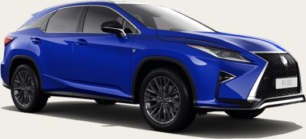Have you ever been cutting veggies for dinner and realised you need to sharpen your knife? And then, once you’ve done it, you realise what the knife is really capable of?
That’s kinda the feeling between the last generation of the Toyota 86 and this new Toyota GR86.
I loved the old 86. Still do. Would have one in a heartbeat. But this - as the analogy suggests - is a much sharper tool.
The engine is a big improvement on the old 2.0-litre - it feels considerably more urgent, and it gathers pace without fuss. You can really rely on the torque of the engine more in the new GR86 - that wasn’t so much the case in the last car, which you had to row through the gears more in. Now you can leave it in fourth and allow the engine to do the work, whereas in corners in the old car, you’d probably have elected to downshift to third, maybe second.
The manual transmission is good, for the most part. It’s easy enough to operate, though the shift action can still feel a little bit notchy (first to second, fifth to sixth in particular in the car I drove). The clutch feel was reasonable, but not stall-proof at low speeds.
The sound of the engine is a bit more pleasant now, too. It doesn’t have the nasal overtones of the last one - with a deeper, more enjoyable noise. It’s not the best sounding boxer engine, but it’s not the worst, either.
I only had a short amount of time in the GR86 automatic, and it was on the Phillip Island race track. It has paddles, which I appreciate - but the gearbox will overrule you if you try and downshift and haven’t managed to get the engine revs down. Self preservation at the expense of outright fun? Yeah. A bit. A dual-clutch auto would be an interesting development in this car - but it’s not going to happen.
Drivers who live in areas where there are lots of potholes and bumpy sections of road - so, most of Australia, then - might feel the now-stiffer chassis is a bit too rigid at times.
It feels much more like a sports car than a sporty car, with Gazoo Racing having honed the suspension to the tastes of Toyota president and master driver, Akio Toyoda. I’ve been to Japan. I know the roads there are a heck of a lot more agreeable than here.
Look, it mightn’t be a deal-breaker for the enthusiast, but the curious customer might find the ride a bit hard.
The trade-off, of course, is terrific handling. It tucks into corners nicely, and with the reworked suspension (Macpherson front, multi-link rear), there’s less of that playful “please keep pushing me so we can have some slidey oversteer” character to it. It will drift, no doubt. But in the last 86, it didn’t take much effort to make that happen.
The steering is excellent, with terrific accuracy and weight, and decent feel through the wheel, too. You don’t feel every single thing at the front axle, but you do have a better gauge of it than you might have in the last GT grade, which famously ran those Prius tyres that were part of the reason sliding it around was a lot easier, too. The rubber on the new GR86 is far better - the GT runs Michelin Primacy HP (215/45/17), and the GTS has Michelin Pilot Sport 4 (215/40/18).
Look, it's still a lot of fun. But it’s fun in a different way. I actually prefer the last one in terms of the drive experience - even though this one is technically more impressive in all the important ways.






